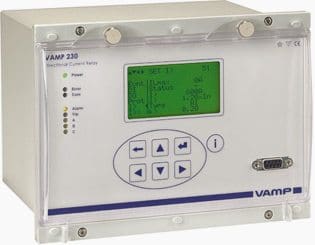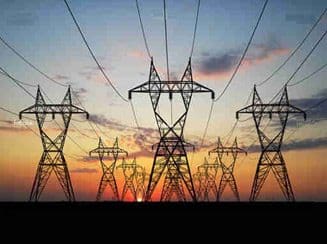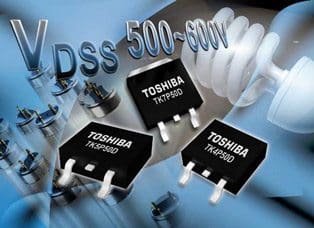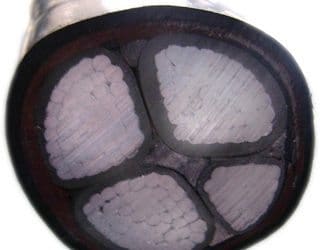Transformer and Transformer-Feeder Protection
The development of modern power systems has been reflected in the advances in transformer design. This has resulted in a wide range of transformers with sizes ranging from a few kVA to several hundred MVA being available for use in… Read more
Nov 30, 2011 | By Edvard Csanyi

Overvoltages Caused by Direct Lightning Strokes
A lightning stroke is defined as a direct stroke if it hits either the tower or the shield wire or the phase conductor. This is illustrated in Figure 1. When the insulator string at a tower flashes over by direct… Read more
Nov 29, 2011 | By Edvard Csanyi

What is the reason beyond three phase transmission?
As the need for increased transmission line capacity have forced power utility and owner to maximize power density in existing transmission corridors. Many experienced have already been done on this, one way to get to this goal (increased capacity), is… Read more
Nov 28, 2011 | By Edvard Csanyi

Power Semiconductor Device – MOSFET
Power MOSFETs are marketed by different manufacturers with differences in internal geometry and with different names such as MegaMOS, HEXFET, SIPMOS, and TMOS. They have unique features that make them potentially attractive for switching applications. They are essentially voltage-driven rather… Read more
Nov 27, 2011 | By Edvard Csanyi

Why do we need variable speed drives (VSD)?
There are many and diverse reasons for using variable speed drives. Some applications, such as paper making machines, cannot run without them while others, such as centrifugal pumps, can benefit from energy savings. In general, variable speed drives are used… Read more
Nov 25, 2011 | By Edvard Csanyi

A Look at the Power Rating of Resistors
You may be asked: “what is the power rating of the resistors you want to buy?” when buying a resistor to build a certain circuit. For the most standard class of resistors, you may simply be given ¼ Watt resistor…. Read more
Nov 24, 2011 | By elaina

Motors And Drives For Efficient Control – ABB
With electric motors accounting for an estimated 65 percent of industrial energy use, any increases in efficiency clearly provide the potential for major savings. The energy consumption of electric motors can be reduced in two main ways – by implementing… Read more
Nov 23, 2011 | By Edvard Csanyi

Fire Properties Of Cables
This is an area of increasing public and legislative concern, and therefore of increasing interest to engineers. There have been major advances in the fire performance of cables in recent years, and table below lists some of the relevant standards…. Read more
Nov 21, 2011 | By Edvard Csanyi

Direct high voltage testing of cable insulation systems
DC testing has been accepted for many years as the standard field method for performing high-voltage tests on cable insulation systems. Whenever DC testing is performed, full consideration should be given to the fact that steady-state direct voltage creates within… Read more
Nov 19, 2011 | By Edvard Csanyi

Partial Discharge Testing On Power Cable Systems
Partial discharge measurement is an important method of assessing the quality of the insulation of power cable systems, particularly for extruded insulation materials. This article considers partial discharge from two points of view: the measurement of all partial discharges occurring… Read more
Nov 18, 2011 | By Edvard Csanyi

North American versus European distribution systems
Distribution systems around the world have evolved into different forms. The two main designs are North American and European. For both forms, hardware is much the same: conductors, cables, insulators, surge arresters, regulators, and transformers are very similar. Both systems… Read more
Nov 17, 2011 | By Edvard Csanyi

What Standards To Use For Transformer Oil Testing?
ASTM (American Society for Testing and Materials) has developed the standards for oil testing. The following tests we recommended for a complete analysis of a transformer’s oil: The dielectric breakdown is an indication of the oil’s ability to withstand electrical…...
Membership Upgrade Required
This content is not available in your premium membership plan. Please upgrade your plan in order to access this content. You can choose an annually based Basic, Pro, or Enterprise membership plan. Subscribe and enjoy studying specialized technical articles, online video courses, electrical engineering guides, and papers.With EEP's premium membership, you get additional essence that enhances your knowledge and experience in low- medium- and high-voltage engineering fields.
Black Friday Deal 💥 - Save 20% on Pro Plan with code BLACKFRIDAY
Upgrade
Nov 15, 2011 | By Edvard Csanyi

Energy Demand Factor, Diversity Factor, Utilization Factor, and Load Factor
This technical article duscusses the five most important factors that are employed in the energy management: Demand Factor, Diversity Factor, Load Factor, Utilization Factor, and Coincidence Factor. The management of energy demand requires the efficient utilization of energy resources, the… Read more
Nov 14, 2011 | By Jignesh Parmar

Moving Iron Instruments – Voltmeter and Ammeter
Moving-iron instruments are generally used to measure alternating voltages and currents. In moving-iron instruments the movable system consists of one or more pieces of specially-shaped soft iron, which are so pivoted as to be acted upon by the magnetic field… Read more
Nov 13, 2011 | By Bipul Raman

High-voltage transmission lines and Electromagnetic Interference (EMI)
The corona discharge produces radio noise and in lesser extent television ( TV ) disturbances around high-voltage transmission lines. This can be easily observed by all of us when we drive under a high-voltage line. The radio produces hissing, crackling… Read more
Nov 12, 2011 | By Edvard Csanyi


